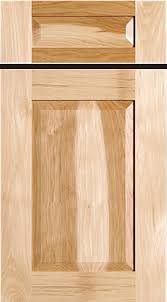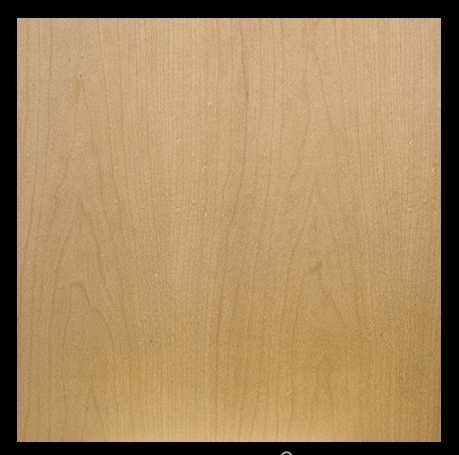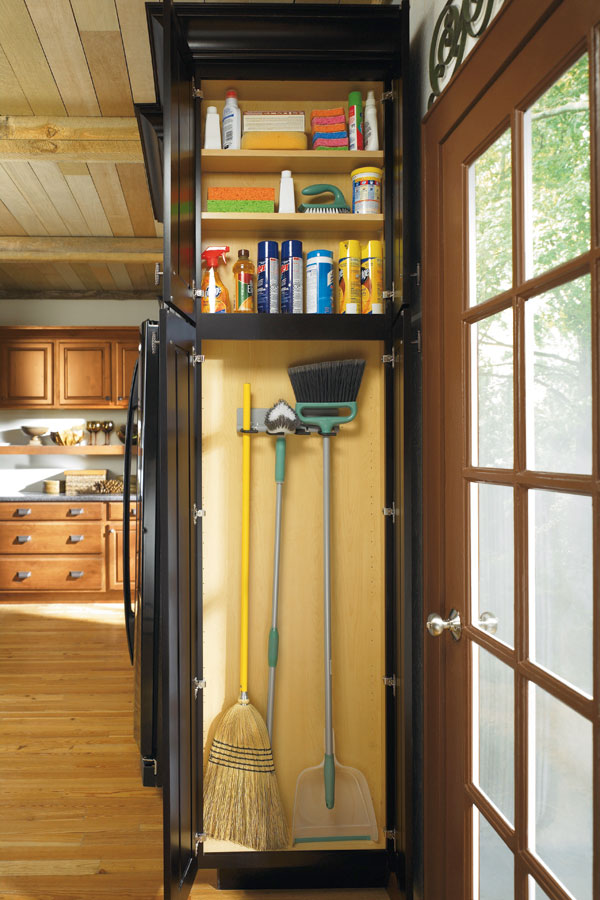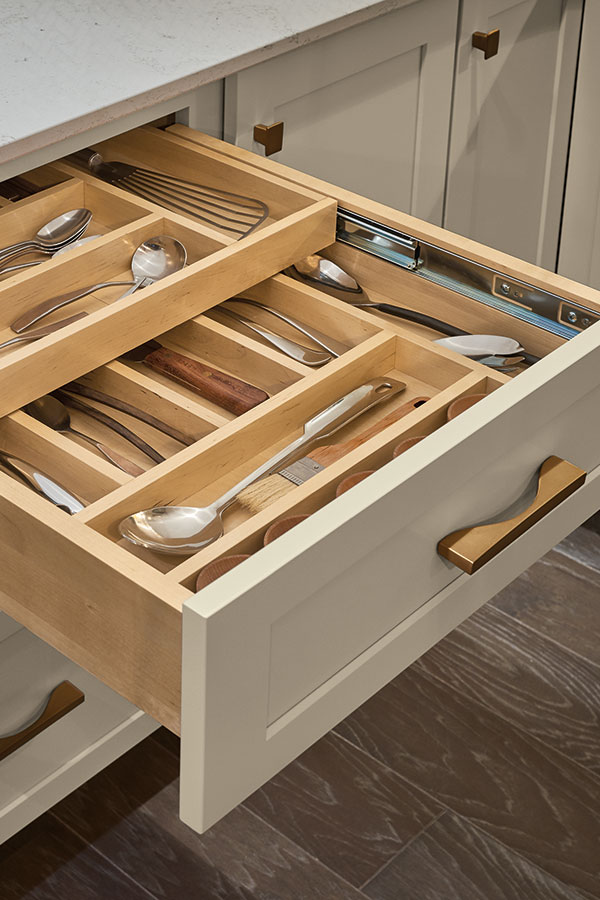So much thought is put into the desired cabinet style that it may be easy to overlook the type of wood used for those cabinets. After all, wood is wood, right? Actually, there are quite a few differences between the wood species, including durability, grain variation, and color. Let’s examine some popular wood choices for cabinetry and their specific characteristics.
OAK- Strong and very durable. Oak contains a rich, coarse wood grain which accepts a wide range of stain colors very well. More affordable than other wood options, Oak has stood the test of time and has been a consistent favorite for many years. Rift Cut and Quarter Sawn are wood cut options often available when choosing Oak.

HICKORY- Similar to oak in strength and durability, Hickory is known for its dramatic grain patterns. Color and streaking vary greatly, even within a single door panel. Adding to the rustic appearance of Hickory are the random pinholes, knots, and streaks of color. These only add to the charm of Hickory cabinetry and are not considered defects.

MAPLE- With a less pronounced wood grain than Oak or Hickory, maple has become a favorite choice in cabinetry. It is desired among families in large part because of its durability and clean, uniform appearance. Paint adheres exceptionally well on this wood species. With the current popularity of white painted cabinets, Maple is an excellent choice for today’s cabinets.

CHERRY- Easily recognized by its deep red undertones, Cherry adds an elegant look to any room. Cherry has a fine grain, and its texture is sometimes referred to as “satiny”. Though the wood itself is lightweight, it is still considered a durable hardwood that resists scratches. Maybe the most sought after characteristic of Cherry is its transformation as the color deepens over time. From a cost perspective, Cherry cabinets generally cost more than previously mentioned wood species.

ALDER- A lesser-known cabinet option, Alder is considered a medium density wood and slightly less durable than Maple, Oak, or Cherry. With a similar grain appearance to Cherry or Maple, Alder can be stained to look like Cherry without the higher cost. Choosing “Knotty Alder” can add a rustic feel to your room thanks to unique wood grain patterns, wormholes, knots, etc. The versatility of Alder can take you from the sophistication of Cherry to the rustic feel of a cabin.

Even with this brief rundown of the different wood species and their characteristics, it is always best to go in person and look at various samples in order to fully appreciate what each species can offer. Hopefully, then you can choose the right wood and the right style for your perfect room.
Stopping in our Spiceland Indiana showroom to see samples of the various wood species is an excellent way to help determine the best species for your renovation project. We look forward to seeing you.




